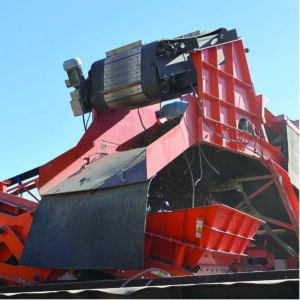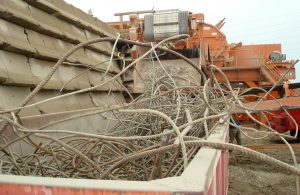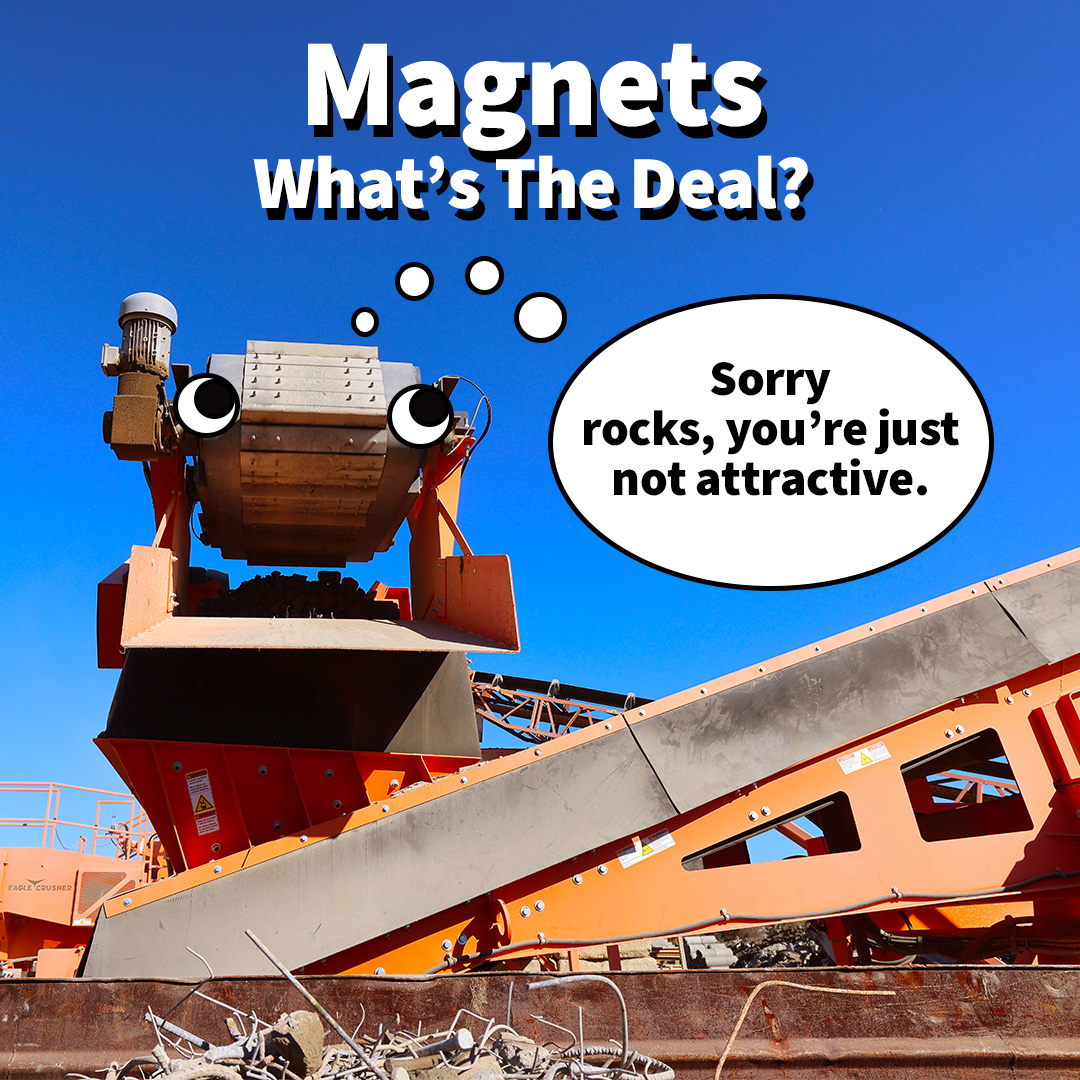Inline & Cross-Belt Magnets: What’s the deal?
The importance of magnets in the concrete recycling, construction, and demolition waste industries is not rocket science (It’s rock science!) The ability to efficiently sort through concrete rubble for rebar and other metal contaminates is necessary to generate a clean and useful final product.
Usually installed along the conveyors of a portable plant, the magnet is a valuable crusher component for separating rebar and other ferrous metal contaminates quickly and automatically from the concrete being crushed and recycled.
At Eagle Crusher, we understand the importance of magnets in concrete recycling operations, and we want to show you the invaluable role these components play. In explaining the two primary magnets, inline and cross belt, we want to show you how instrumental they are in ensuring a high-quality finished product.
The two types of magnets.
Magnets come in two primary varieties in the crushing industry, electromagnet, and permanent magnet.
Permanent magnets are, as their name suggests, permanently magnetized. They will remain magnetic for their entire service life and require nothing other than proper placement to remove rebar or other ferrous materials that pass near them.
Electromagnets utilize an electric current to generate a magnetic field that attracts the rebar and other steel. However, when the power is removed, the magnetic field disappears. These magnets are usually more powerful than permanent magnets but are frequently larger, more complex, and weigh substantially more.
In most applications, we equip both types of magnets with a reinforced belt that allows the material to be pushed away from the magnetic field and discharged via a chute into a scrap bin or pile for recycling or disposal.

Inline vs. cross belt, what’s the difference?
The difference between an inline magnet and a cross-belt magnet is that an inline magnet is positioned in line with the conveyor, usually at the very end of the conveyor at a transfer point to another conveyor. A cross-belt magnet is situated perpendicular to the conveyor.
In general, inline magnets are more efficient at removing rebar and other steel contaminants because the material isn’t weighed down against the belt when it is transferred to another conveyor, as it would be in cross-belt. Therefore, inline magnets pull the steel through the otherwise heavy rock and collect it.
However, at times, plant or conveyor configurations preclude having an inline magnet at the end of a conveyor, and a cross-belt magnet is necessary. For example, The RapiDeploy 500 and RapiDeploy 1000 plants feature an optional cross-belt permanent magnet that can stay on for transport.

Now that we understand the deal with magnets…
Which one is best for you
The usefulness of each electromagnet depends on each unique operation. If a crusher is conveying heavy volumes of reclaimed concrete or is conveying material more quickly, installing an inline magnet may be more practical. However, installing a cross-belt magnet to best fit the optimal layout of the crushing site and equipment may also be more valuable.
Eagle Crusher offers both inline and cross-belt magnet options. Contact our service team to learn which electromagnet option is best for your operation and order an inline or cross-belt magnet for installation.



